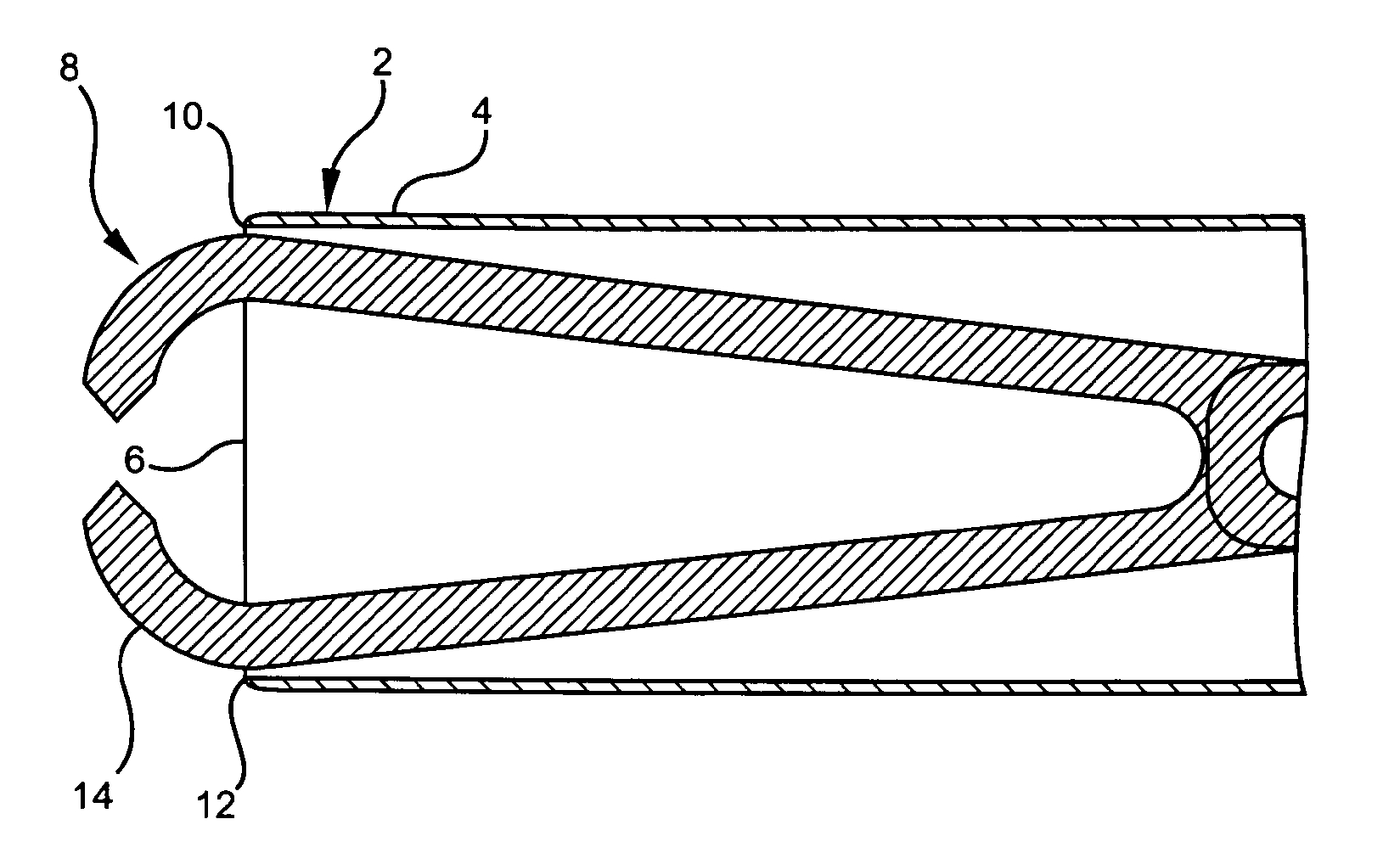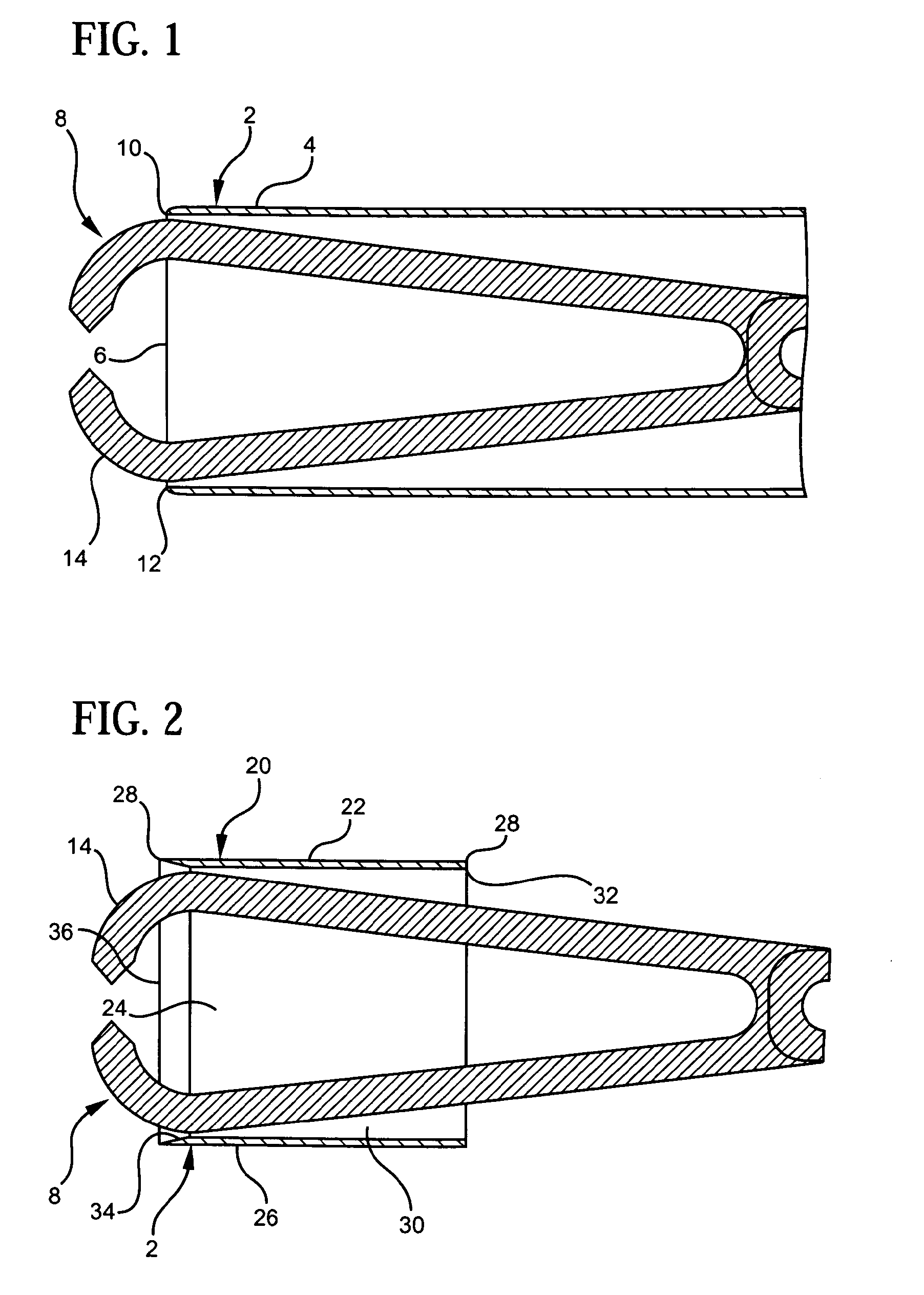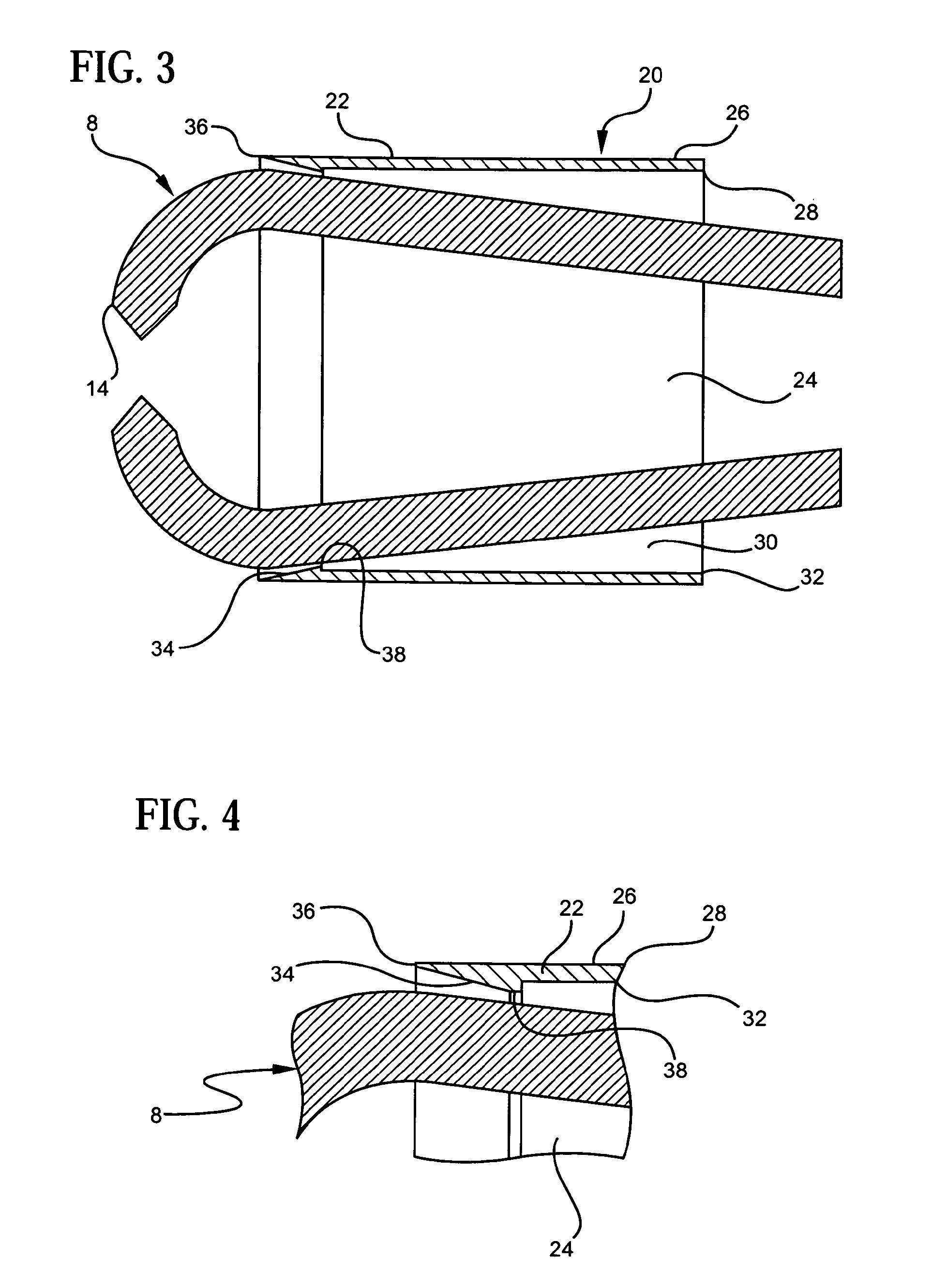Cutting blade for morcellator
a morcellator and cutting blade technology, applied in the field of surgical devices and methods, can solve the problems of affecting the use effect of the morcellator, so as to reduce the chances of the morcellator becoming dull or damaged during use.
- Summary
- Abstract
- Description
- Claims
- Application Information
AI Technical Summary
Benefits of technology
Problems solved by technology
Method used
Image
Examples
Embodiment Construction
[0033]To facilitate an understanding of the present invention, reference should be made to FIG. 1 of the drawings, which shows the distal end 2 of a cutting blade 4 of a conventional morcellator. The morcellator has a cylindrical cutting blade 4 that rotates within an outer fixed tube or sleeve (not shown). The cutting blade 4 defines an axial bore 6 in which is selectively received a tissue grasping tool, or tenaculum 8. The exposed cutting edge 10 of the conventional morcellator blade 4 is sharpened in the cylindrical plane of the radially inner surface 12 of the cutting blade, as can be seen in FIG. 1.
[0034]The tenaculum 8 includes two expandable grasping claws or hooks 14 which are intended to grasp the tissue of an anatomical body (e.g., organ) and pull the tissue toward the rotating cutting blade 4 of the morcellator so that it may be cut into tissue “morsels”. The claws 14, after grasping tissue between them, may be in an expanded or spread state, as the tenaculum 8 is pulled...
PUM
 Login to View More
Login to View More Abstract
Description
Claims
Application Information
 Login to View More
Login to View More - R&D
- Intellectual Property
- Life Sciences
- Materials
- Tech Scout
- Unparalleled Data Quality
- Higher Quality Content
- 60% Fewer Hallucinations
Browse by: Latest US Patents, China's latest patents, Technical Efficacy Thesaurus, Application Domain, Technology Topic, Popular Technical Reports.
© 2025 PatSnap. All rights reserved.Legal|Privacy policy|Modern Slavery Act Transparency Statement|Sitemap|About US| Contact US: help@patsnap.com



